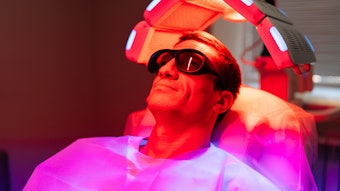
Skin care products have evolved for decades, often passed down through generations as combinations of elixirs and home remedies. It was not until the early 1900s that the pioneering beauty entrepreneur Helena Rubinstein introduced the concept of a structured skin care regimen based on skin types, which included a newly invented “anti-wrinkle cream” Valaze Extrait, around 1915. Unbeknownst to many, it was Rubenstein who introduced the concept of “skin typing” for skin care products, and along with her astute marketing, led to the groundbreaking distribution and sale of skin care products in pharmacies and beauty salons. In the 1980s, the beauty industry introduced highly innovative formulation technologies such as liposomes and other anti-aging strategies to meet consumer needs, focusing strongly on anti-aging appeal.1-3
Over the years, the concentration of anti-aging products and concepts has been intended to slow down or reverse the effects of aging to maintain a youthful appearance. The anti-aging market unquestionably has been a driving force in the beauty industry, fueling product development, equipment and services. Globally, the anti-aging market has shown a consistent and historically strong performance, reaching a value of $73 billion in 2024, and it is projected to almost double to $140.94 billion by 2034.4
Enter Pro-aging
However, more recent contemporary lifestyles and strategies have emerged to address signs of skin aging and dysfunction by emphasizing and promoting skin health, overall well-being, and how healthy we look and feel - over the reversing aging standards. The latest perspective on aging introduces the concept of "pro-aging," which encourages embracing a positive approach to aging and prioritizing self-care. The pro-aging or well-aging mindset urges us to prioritize our health and see aging as a gift rather than an obstacle, enabling us to live life to the fullest in the present moment.
For many people, embracing the pro-aging perspective has led to an increased sense of self-worth and empowerment in self-care. The holistic mindset is placed front and center alongside this realistic inclusivity rather than unrealistic beauty standards. Pro-aging concepts embrace a practical approach to using products, services, practices and skin health processes aligned with the body's natural functions. Several celebrity pro-aging role models have championed that aging is not simply a number but a mindset allowing us to embrace our age and beauty wholeheartedly without apologizing. They have showcased the significance of feeling at ease in our own skin while fully engaging in life. This advocacy introduces a new sense of self-authenticity, concepts, and strategies to enhance our understanding of healthy aging from an optimistic and beneficial perspective.
Theories of Aging
The processes of aging have multiple theories and concepts that give insight into the mechanisms of cellular and physical characteristics:
Programmed Longevity. This involves switching off and on specific genes and senescence at the cellular level, which defines the onset of age-related symptoms.
Immunological Theory. This theory states that as individuals age, the immune system tends to become less efficient and experiences widespread dysfunction, as evidenced by autoimmunity and a decreased ability to respond to infection and other immune challenges. Innate immunity provides non-specific defense against pathogens, while adaptive immunity offers a specific response to previously encountered pathogens.
Wear and Tear Theory.This theory suggests that aging occurs due to the gradual deterioration of the body's cells and tissues caused by wear and tear, oxidative stress, exposure to radiation, toxins or other deteriorative processes. Our bodies can repair DNA damage, but not all of those repairs are accurate or complete. As a result, the damage gradually accumulates and leads to signs of aging.
Rate of Living Theory. This roposes that an organism's lifespan is determined by the consumption of a vital substance at a rate proportional to its metabolic rate. This theory included two factors believed to influence lifespan: a genetically determined metabolic potential and the rate of metabolism.
Cross-Linking Theory. The cross-linking or Glycosylation theory of aging suggests that the binding of glucose to proteins, which happens in the presence of oxygen, may contribute to aging (glycation). This binding impairs the proteins, reducing their efficiency. Over time, prolonged exposure to this process increases the likelihood of glucose and protein coming into contact, leading to cross-linking disorders. Agents that contribute to crosslinking include aldehydes, lipid oxidation products, sulfur, alkylating agents, quinones, and free radicals induced by ionizing radiation. Crosslinking damages tissues by reducing elasticity, swelling capacity, and resistance to hydrolases and enzymes.
Neuroendocrine Theory. The "aging clock" theory suggests that our body's ability to maintain internal balance decreases as we age, weakening our ability to adapt to changes. The central regulatory system for maintaining balance in humans, known as the hypothalamic-pituitary axis (HPA), becomes less efficient with age. This results in an increase in abnormal responses to changes in the body and a decline in many physiological functions. Recent studies confirm that hormones control aging, with the insulin/IGF-1 signaling pathway playing a critical role. The hypothalamus directs other organs and glands to release their hormones by controlling chain reactions. Research suggests that damage caused by the hormone cortisol can impair the hypothalamus' ability to regulate. cortisol, responsible for stress regulation, is produced by the adrenal glands near the kidneys. It is one of the few hormones that increases with age, and elevated cortisol levels can lead to the breakdown of muscle tissue and collagen.
Free Radical Theory. The free radical theory suggests that aging results from oxidative damage to the body's cells and tissues, primarily caused by aerobic metabolism. This theory can explain various structural changes that occur as we age, such as the peroxidation of lipids in cell membranes, the formation of age-related pigments, the cross-linking of proteins, DNA damage, and the decline of mitochondrial function. There are several lines of evidence supporting the free radical theory. These include the link between lifespan, metabolic rate, and the level of protective antioxidant activity, the increase in cellular levels of free radical damage with age, and the potential for reduced calorie intake to lead to a decline in the production of reactive oxygen species and an increase in lifespan. Free radicals attack our cell membranes, creating metabolic waste products, including lipofuscin. Lipofuscins interfere with the cells' ability to repair and reproduce themselves, disturb DNA and RNA synthesis, inhibit protein synthesis, and destroy cellular enzymes. Free radicals also attack collagen and elastin, causing the structures to break down. While the body can repair itself, with age, the effects of accumulated free radicals begin to slow down cell renewal, thereby reducing the body’s self-repair capabilities and leading to increased breakdown. It is important to note that aging is likely to be a complex process with multiple factors rather than attributable to a single cause.5-6
Signs and Signals of Aging
Physiological skin aging is a complex process influenced by both intrinsic and extrinsic factors and evolves from a combination of influences that affect various identifiable markers. The decline in skin barrier function during aging makes the skin more prone to infection and affects its ability to heal wounds. Therefore, it is essential to understand cellular aging mechanisms from a clinical perspective concerning the use of anti-aging skin care products. The major perceived risk factors are UV radiation, environment, unhealthy eating habits, stress, less exercise, dehydration, diseased state, and sleeping habits.
The primary forces responsible for the aging of the face are: gravity, soft tissue maturation, skeletal removeling, muscular facial activity, muscular facial decline and solar degradation.
Several characteristics include: cellular senescence, changes in amino acid composition (may reduce NMF), changes in neurosensory perception, repair, collagen loss, corneocytes become larger for decreased epidermal cell turnover, decrease in glycosaminoglycans (GAGs), decrease in hyaluronic acid, decrease in mast cells, decrease in sebum production as much as 60%, decreased elastin function, decreased fibroblast production, deep dynamic and static wrinkles, delayed wound healing, development of mouth commissures, development or increase in hyperpigmentation, DNA damage, elastosis, epidermal thinning, epidermis decreases in thickness, estrogen loss (accelerates aging), fat cells and pads begin to diminish, glycation, impaired enzyme and filaggrin activity, impaired lymphatics, incomplete corneocyte compaction, increased potential for TEWL, increased vascular fragility, lipid peroxidation, lipofuscin development, loss of structural integrity, MMP collagen breakdown, photodamaged thickened epidermis, platysma (neck banding), pre-jowl development, reduced Cellular turnover, reduced supplies of cellular nutrients, reduction of natural water and fat emulsion, repetitive contracture of small facial muscles induces frown lines, telomere shortening, vascular changes and volume loss and thinning lips. 7
Observations and Considerations
Estrogen. Lower estrogen levels contribute to skin aging in women, and compounds that activate estrogen receptors could help reduce some visible signs of aging. As life expectancy rises, women spend more years in a post-menopausal state.
Hormones. Changes in cells and tissues impact the neuroendocrine feedback regulation of secretions of the Luteinizing Hormone (LH), Follicle follicle-stimulating hormone (FSH), Adrenocorticotrophic Hormone (ACTH), and Growth Hormone (GH) and appear to be largely attributed to the drastic decline of hormones in the body with aging.
UV damage. The UV region of solar radiation can cause cellular injury, and visible radiation has a similar oxidative effect as infrared radiation due to heat generation. Factors such as smoking and atmospheric pollution also contribute to sun damage. Importantly, oxidative stress has a negative impact on cellular processes, including DNA replication.
Cell aging. As cells age, they change the intercellular matrix, release inflammatory cytokines and experience infiltration by other cell types. Additionally, the quantity and distribution of growth factors can affect wound healing. Decreased DNA repair and loss of melanin increase the risk of developing cancer due to sun exposure and lead to a decline in enzymatically active melanocytes by 10-20% each decade, making the skin more sensitive to UV radiation.8
Inflammation. Inflammation or “inflammaging” is the leading cause of age-related diseases like osteoporosis, arteriosclerosis and arthritis, as well as an increased susceptibility to infections. The weakening of the immune system affects skin cells, increasing the number of aged skin cells. This higher production of pro-inflammatory substances leads to low-level skin inflammation and increased oxidative stress in the skin's structures. Oxidative stress happens when there is an excess of reactive oxygen species (ROS), leading to lipid peroxidation. This, in turn, triggers skin-irritating chain reactions, causing enzymatic breakdown of collagen and elastin through matrix metalloproteinases (MMP). The skin's expression is increased due to the formation of radicals and cytokines.9
Cell senescence. Cell senescence limits the number of times an average somatic cell can divide and may be a critical factor in age-related diseases. Telomeres are believed to be involved in cellular aging and may influence the genetic basis of human aging and longevity. It has been suggested that the restricted ability of human cells to multiply is due to the shortening of telomeres that happens during DNA replication with each cell division. Photoaging may accelerate the shortening of telomeres and push cells into senescence sooner. This could be why various growth factors may affect the speed and quality of wound healing.
Powering Up Telomeres
Telomeres are unique structures located at the ends of our chromosomes. They are made up of the same short DNA sequence repeated multiple times and play a crucial role in ensuring proper replication of the chromosomes during cell division. Telomeres also help organize 46 chromosomes in the nucleus and protect the chromosome ends by forming a “cap.”
Without telomeres, our chromosomes could bind to other chromosomes. During DNA replication, chromosomes are naturally shortened by about 25-200 bases per replication. However, because the telomeres cap protects the ends, the only part of the chromosome lost is the telomere itself, leaving the DNA undamaged. Without telomeres, necessary DNA would be lost every time a cell divides eventually losing entire genes. Each time a cell divides, bases are lost from the ends of the telomeres on each chromosome. This loss of about 20 base pairs per cell division is known as the "end replication problem" and leads to cell senescence. The telomerase enzyme is active in specific somatic cells, such as those in the epidermis, but is almost undetectable in the dermis. Increasing evidence suggests that telomerase plays a significant role in maintaining skin function and proliferation. Telomeres in skin cells may be particularly susceptible to accelerated shortening due to proliferation and DNA-damaging agents, such as reactive oxygen species. The skin could be an accessible tissue for manipulating telomerase activity and telomere length, potentially improving skin diseases associated with aging.10
The Mighty Mitochondria
Our body contains 250 types of cells, each with specific genes tailored to meet the cell's requirements. Mitochondria are closely involved in most of the cell's major metabolic pathways to build, break down, and recycle its molecular building blocks. Often referred to as the cell's energy factory, mitochondria have specialized duties that adapt to each phase of life, from embryo to old age. They are essential to the growth and function of all cells and accomplish many metabolic tasks. A single cell -can contain as many as 500 to 2000 mitochondria scattered throughout its cytoplasm. Mitochondria act as storage units for energy converted from food nutrients and are the sites for aerobic respiration and energy production. Growing evidence shows that mitochondrial dysfunction and oxidative stress are critical factors in aging all tissues, including the skin.11
Mitochondrial biogenesis is crucial for regulating skin aging. Maintaining a balance between mitochondrial “crosstalk” helps stabilize mitochondria and slow down the aging process in the skin. Mitophagy, which involves engulfing and degrading damaged proteins and mitochondria, ensures mitochondrial quality and helps prevent skin aging. Additionally, mitochondria have their DNA and convert stored chemical energy into ATP (Adenosine Triphosphate). This energy is produced through the collaborative actions of proteins in the inner mitochondrial membrane, known as the electron transport chain. These metabolic changes are essential when evaluating cells' biological age and health status – noting that from the moment an ATP molecule is produced, it is typically consumed within one minute.
Defend and Protect
Changes in diet, increasing exercise, and a regimen of antioxidants, nutritional supplements, and growth factors can alter how the genes express themselves.
Antioxidants work preventively by suppressing the formation of free radicals and activating defense systems at different levels. This includes prevention, scavenging of radicals, repair, and adaptation. By scavenging free radicals, antioxidants can address lipid peroxidation and delay or inhibit cellular damage. Both enzymatic and non-enzymatic antioxidants reduce lipid hydroperoxide and hydrogen peroxide levels, prevent lipid peroxidation, and modulate free radical reactions. Antioxidants can interact with free radicals, stopping the chain reaction before vital molecules are damaged, thereby maintaining the structure and function of the cell membrane. The skin can absorb antioxidant nutrients through diffusion and intercellular signaling pathways, providing various levels of protection depending on the antioxidant, dosage, and absorption factors. The skin's natural repair mechanisms include enzymatic antioxidants like superoxide dismutase, catalase, glutathione peroxidase, various forms of vitamin E, vitamin C and ubiquinol. The skin contains nutrients such as lycopene, carotene, lutein, zeaxanthin, and ascorbic acid.
Interestingly, the outer layer of the skin (epidermis) contains more antioxidants than the inner layer (dermis) due to exposure to light and the skin's natural protective response. Despite being the largest organ in the human body, the skin is the last to receive nutrients from the bloodstream as other organs are given priority. Consuming antioxidants is important because they help protect the skin internally by providing antioxidant protection to the cells. Vitamin A, especially from carotenoids, is crucial for skin protection as it enhances the body's ability to provide some level of sun protection (depending on dietary vitamin A intake) and may reduce the inflammatory response induced by UV rays by decreasing prostaglandin E2, which is a mediator in arachidonic acid. Furthermore, studies have shown that fibroblasts are significantly capable of reducing lipid peroxidation caused by UVB rays through beta carotene, lutein, and lycopene.
The most effective antioxidant synergies utilized both topically and systemically are the following.
Vitamin C. Vitamin C removes extensive free radicals and repairs oxidized vitamin E.
Vitamin E. Vitamin E is important for the neutralization of singlet oxygen in the cell membrane and prevention of lipid peroxidation.
Resveratrol. Resveratrol inhibits UV-induced radiation and DNA mutation.
Epigallocatechin gallate (Green tea). EGCG inhibits ROS and lipid peroxidation.
Lipoic Acid. This free radical neutralizer, repairs the endogenous antioxidant systems
Insert "Lifestyle Choices for Telomere and Mitochondria Protection" and make an image version for the web ****
Insert Food To Help Prevent Aging table and make an image version for the web***12
Foods that are packed with nutrients and contain high levels of phytonutrients and antioxidants can help shield the body from damage caused by free radicals in the environment and non-food substances. Antioxidants work in tandem as co-factors, reactors, and recyclers, bolstering each other's functions. This cooperative interaction among antioxidants reinforces the scientific notion that their collective activity is more potent than when they function independently. Collectively, antioxidants may provide the following benefits.
- Repair to damaged molecules
- Prevent oxidation, lipid peroxidation
- Chelate metal radical production (cell damage by metal ions)
- Support gene expression (gene synthesis and output)
- Shield DNA and support telomere health
- Lower LDL cholesterol levels
- Boost the immune system
- Prevent cancer in nutrition regimes
- Regulate DNA cell genetics (epigenetics)
- Serve as precursors to cellular mediators
- Inhibit cell-damaging enzymes
- Promote apoptosis in cancer cells
- Regulate cellular redox buffering agents
- Modify proteins enzymatically following biosynthesis
References
1. www.sciencedirect.com/science/article/abs/pii/B9780815515845500065
2. https://cosmeticsandskin.com/companies/helena-rubinstein-1915.php
3. Nava, Dayan: Skin Aging Handbook -An Integrated Approach to Biochemistry and Product Development 2008 ISBN ISBN: 978-0-8155-1584-5
4. www.precedenceresearch.com/anti-aging-market
5. www.ncbi.nlm.nih.gov/pmc/articles/PMC1369273
6. https://link.springer.com/referenceworkentry/10.1007/978-0-387-33754-8_313
7. https://skininc.texterity.com/skininc/june_2022/MobilePagedArticle.action?articleId=1795023#articleId1795023
8. https://austinpublishinggroup.com/womens-health/fulltext/ajwh-v6-id1034.php
9. https://dermaviduals.de/english/publications/anti-aging/inflammaging-the-role-of-adequate-skin-care.html
10. www.ncbi.nlm.nih.gov/pmc/articles/PMC3690281/
11. www.ncbi.nlm.nih.gov/pmc/articles/PMC6627661/
12. www.sciencedirect.com/science/article/pii/S0955286311000052
Dr. Erin Madigan-Fleck, NMD, LE, LEI, is an esteemed figure in dermatological skin sciences, holistic and integrative esthetics, and natural health. She is a naturopathic physician, a licensed master cosmetologist-esthetician, an esthetic instructor, and holds a dermatology tech certificate. She serves on the Educational Commission for the International Association of Applied Corneotherapy in Germany and has taught continuing education for over four decades. She is the owner of DermaEducationTV, the Scientific Esthetics Symposium, and her practice Naturophoria, established in 2000.










